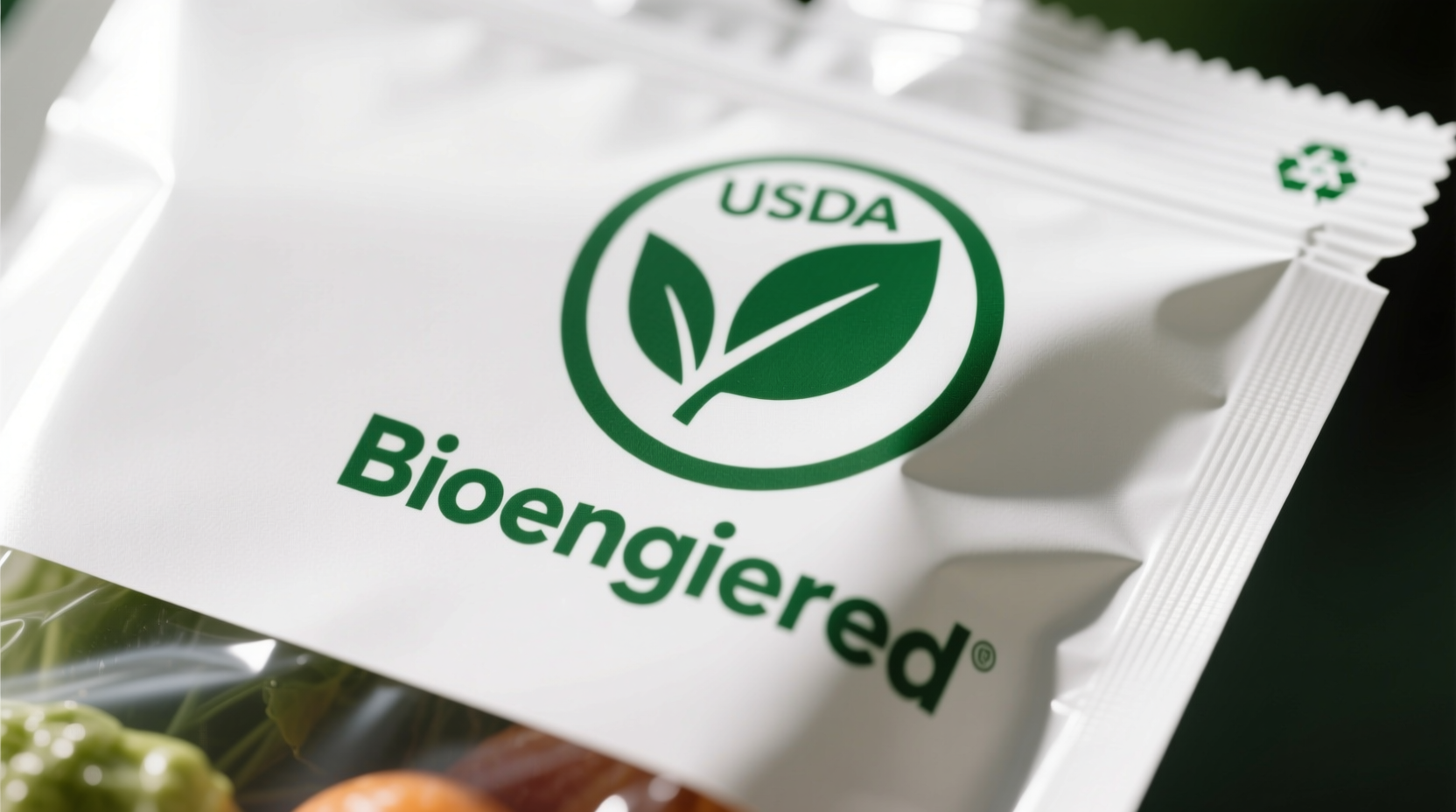Curious about what sets bioengineered foods apart in today's grocery aisles? You're not alone. With increasing transparency requirements and evolving food technology, understanding these products has become essential for informed shopping decisions. This guide cuts through the confusion with clear definitions, regulatory insights, and practical identification tips—so you can navigate labels with confidence.
Defining Bioengineered Foods: The Official Standard
The USDA's National Bioengineered Food Disclosure Standard provides the definitive answer to what are bioengineered foods. According to this regulation, bioengineered foods contain "genetic material that has been modified through in vitro recombinant deoxyribonucleic acid (DNA) techniques" and "for which the modification could not otherwise be obtained through conventional breeding or found in nature."
This definition specifically targets foods with detectable modified genetic material. The standard excludes products where genetic modification occurred through traditional breeding methods or where no modified genetic material remains in the final product (like highly refined oils).
Bioengineered vs. GMO: Understanding the Distinction
Many consumers use "bioengineered" and "GMO" interchangeably, but there are important regulatory differences. The USDA created the "bioengineered" label as a more precise term for mandatory disclosure requirements.
| Characteristic | Bioengineered (BE) | GMO |
|---|---|---|
| Regulatory Definition | USDA-mandated term with specific legal criteria | Broader scientific term without standardized regulation |
| Labeling Requirement | Mandatory disclosure on packaging | No federal labeling requirement |
| Genetic Material | Must contain detectable modified DNA | May or may not contain modified DNA |
| Scope | Narrower category under specific regulation | Broad category including various modification techniques |
Evolution of Bioengineered Food Regulation
Understanding the regulatory timeline helps clarify why the "bioengineered" label emerged when it did:
- 1992: FDA establishes policy that GMO foods don't require special labeling if substantially equivalent to conventional counterparts
- 2016: National Bioengineered Food Disclosure Law signed by President Obama, creating mandatory federal standard
- 2018: USDA finalizes National Bioengineered Food Disclosure Standard
- January 1, 2022: Mandatory compliance date for most food manufacturers
- 2023-Present: Ongoing refinement of disclosure methods and product exemptions
Common Bioengineered Food Examples
Currently, the USDA identifies these common bioengineered ingredients in the US food supply:
- Sweet corn (approximately 80% of US sweet corn is bioengineered)
- Canola (about 95% of US canola is bioengineered)
- Soybeans (over 94% of US soybeans are bioengineered)
- Sugar beets (99.9% of US sugar beets are bioengineered)
- Papaya (primarily from Hawaii and Thailand)
- Summer squash
- Alfalfa (used primarily for animal feed)
It's important to note that not all products containing these ingredients require bioengineered labeling. The disclosure is only mandatory when detectable modified genetic material remains in the final product.
How to Identify Bioengineered Foods
Since the 2022 implementation deadline, US consumers can look for these official disclosure methods:
- Text disclosure: "Bioengineered food" or "Contains a bioengineered food ingredient"
- BE symbol: The USDA-approved sunflower-like logo
- Electronic/digital link: QR codes or text messages directing to disclosure information
- Text phone number: For consumers to call for disclosure information
Manufacturers must ensure these disclosures are "prominently and conspicuously placed" on packaging. The USDA maintains a complete list of exempt and non-exempt products for reference.

Benefits and Considerations of Bioengineered Foods
Bioengineered foods offer several potential advantages while raising important considerations:
Benefits:
- Enhanced crop resistance to pests and diseases
- Improved nutritional profiles (like golden rice with added vitamin A)
- Reduced need for chemical pesticides
- Increased crop yields to support growing populations
- Development of foods with longer shelf life
Considerations:
- Ongoing scientific debate about long-term environmental impacts
- Consumer preference for transparency in food labeling
- Intellectual property concerns regarding seed ownership
- Need for continued safety monitoring by regulatory agencies
The National Academies of Sciences, Engineering, and Medicine conducted a comprehensive review of genetically engineered crops and concluded that current bioengineered foods are as safe to eat as their non-bioengineered counterparts.
Practical Shopping Guidance
When navigating grocery store choices, consider these practical steps:
- Check for official BE disclosures on primary display panels
- Understand exemptions: Highly refined products like corn syrup or soybean oil often don't require labeling
- Look for USDA Organic certification if you prefer to avoid bioengineered ingredients (organic standards prohibit their use)
- Use manufacturer websites for additional product information beyond packaging
- Download the USDA's BE Disclosure app for on-the-go product verification
Remember that the presence of a bioengineered label doesn't indicate safety concerns—the USDA, FDA, and scientific consensus confirm these products undergo rigorous safety evaluations before market entry.
Future Developments in Bioengineered Foods
The field continues evolving with new technologies and regulatory considerations:
- Emerging gene-editing techniques like CRISPR may challenge current definitions
- Ongoing discussions about modifying disclosure requirements for new technologies
- Increasing consumer demand for transparency driving more detailed labeling
- Development of bioengineered foods addressing specific nutritional deficiencies
- Potential expansion of bioengineered crops to include more fruit and vegetable varieties
As these technologies advance, regulatory frameworks will continue adapting to balance innovation with consumer transparency needs.











 浙公网安备
33010002000092号
浙公网安备
33010002000092号 浙B2-20120091-4
浙B2-20120091-4